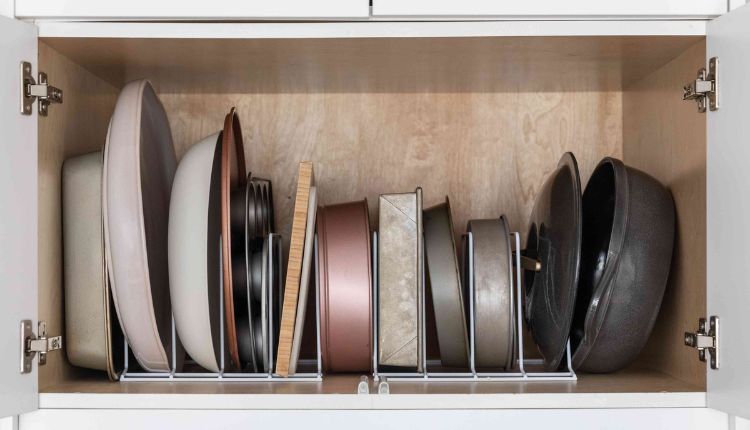A well-organized kitchen pantry is a game-changer when it comes to efficient meal prep, grocery shopping, and maintaining a clutter-free home. But achieving that perfectly organized pantry can be a daunting task. In this comprehensive guide, we’ll show you the best cleaning tricks and take you through effective methods for cleaning and organizing your kitchen pantry, helping you create a space that’s not only tidy but also functional and visually appealing.
Why a Clean and Organized Pantry Matters
Before we dive into the methods, let’s understand why having a clean and organized pantry is essential:
Efficient Meal Planning: A well-organized pantry makes it easy to see what ingredients you have, allowing for better meal planning and reducing food waste.
Quick Grocery Shopping: Knowing what you need and what you already have in stock streamlines your grocery shopping trips.
Stress Reduction: A clutter-free and organized pantry reduces stress in the kitchen, making cooking and baking more enjoyable.
Space Optimization: Proper organization maximizes your pantry space, so you can store more items efficiently.
Now, let’s explore the steps to achieve a perfectly organized pantry.
Set Clear Goals
To begin your pantry organization journey, it’s crucial to set clear goals. Consider what you want to achieve, whether it’s optimizing space, reducing clutter, or creating specific storage areas for different food categories. Setting objectives and finding durable and long-lasting solutions will guide your efforts.
Gather Supplies
Before you start organizing, gather the necessary supplies. You’ll need storage containers (clear containers work best), labels, a label maker or markers, cleaning supplies, and a step stool if you have high shelves. Having these items on hand will make the process smoother.
Empty the Pantry
The first step in pantry organization is to empty everything from your pantry shelves. This allows you to assess each item, check expiration dates, and determine what you want to keep, donate, or discard. Be thorough in this step.
Clean Thoroughly
With your pantry shelves empty, take the opportunity to clean them thoroughly. Wipe down the shelves, walls, and floor, and use a vacuum or a handheld brush to remove any crumbs or debris. Starting with a clean slate is essential.
Categorize Your Items
Once you’ve decluttered and cleaned, start categorizing your pantry items. Group similar items together, such as canned goods, grains, pasta, snacks, and baking supplies. This categorization will help you create distinct zones within your pantry.
Invest in Clear Containers
For items like pasta, rice, flour, and sugar, transfer them into clear, airtight containers. This not only keeps your food fresh but also allows you to easily see the contents. Label the containers for added convenience.
Use Shelf Organizers
Maximize your shelf space by incorporating shelf organizers like risers and expandable shelves. These tools create additional layers, making items more accessible and preventing overcrowding.
Label Containers
To maintain an organized pantry, label each container with its contents and, if applicable, the expiration date. Consider using a label maker for a neat and uniform look, or adhesive labels with markers for flexibility.
Label Shelves
For added clarity, label your pantry shelves or zones. You can use removable labels or chalkboard labels, allowing you to adapt as your pantry contents change. Proper labeling helps everyone in your household find what they need.
Use Drawer Dividers
To keep small items like spices, condiment packets, or kitchen tools in order, incorporate drawer dividers. These dividers prevent clutter and make it easy to locate specific items when you need them.
Install Hooks and Racks
Consider adding hooks or racks to the inside of your pantry door or on the pantry walls. These can hold aprons, kitchen towels, or even small baskets for snacks, further optimizing your storage space.
Rotate Stock
Maintaining an organized pantry involves keeping track of your inventory. When restocking your pantry after grocery shopping, place newer items behind older ones. This ensures that you use items before they expire and minimizes food waste.
Schedule Regular Checks
Set a schedule to review your pantry every few months. During these checks, identify items that need replenishing, using up, or donating. It’s an opportunity to keep your pantry in top shape.
Meal Planning
With your organized pantry, meal planning becomes a breeze. Consider preparing a weekly or monthly meal plan based on the ingredients you have in stock. This not only saves time but also reduces food costs.
Cooking with Pantry Staples
Explore recipes that primarily use pantry staples. This can be especially handy when you need to whip up a meal without a trip to the grocery store. Having a well-stocked pantry ensures you can create delicious dishes anytime.
A clean and organized kitchen pantry is a valuable asset in your home, simplifying meal prep, reducing stress, and optimizing your storage space. By following these effective methods for pantry organization, you can create a functional and visually appealing space that streamlines your cooking and baking efforts. Remember that the key to maintaining an organized pantry is regular checks and a commitment to keeping it clutter-free. So, roll up your sleeves, gather your supplies, and start mastering the art of a clean and organized kitchen pantry. Your culinary adventures will thank you!
